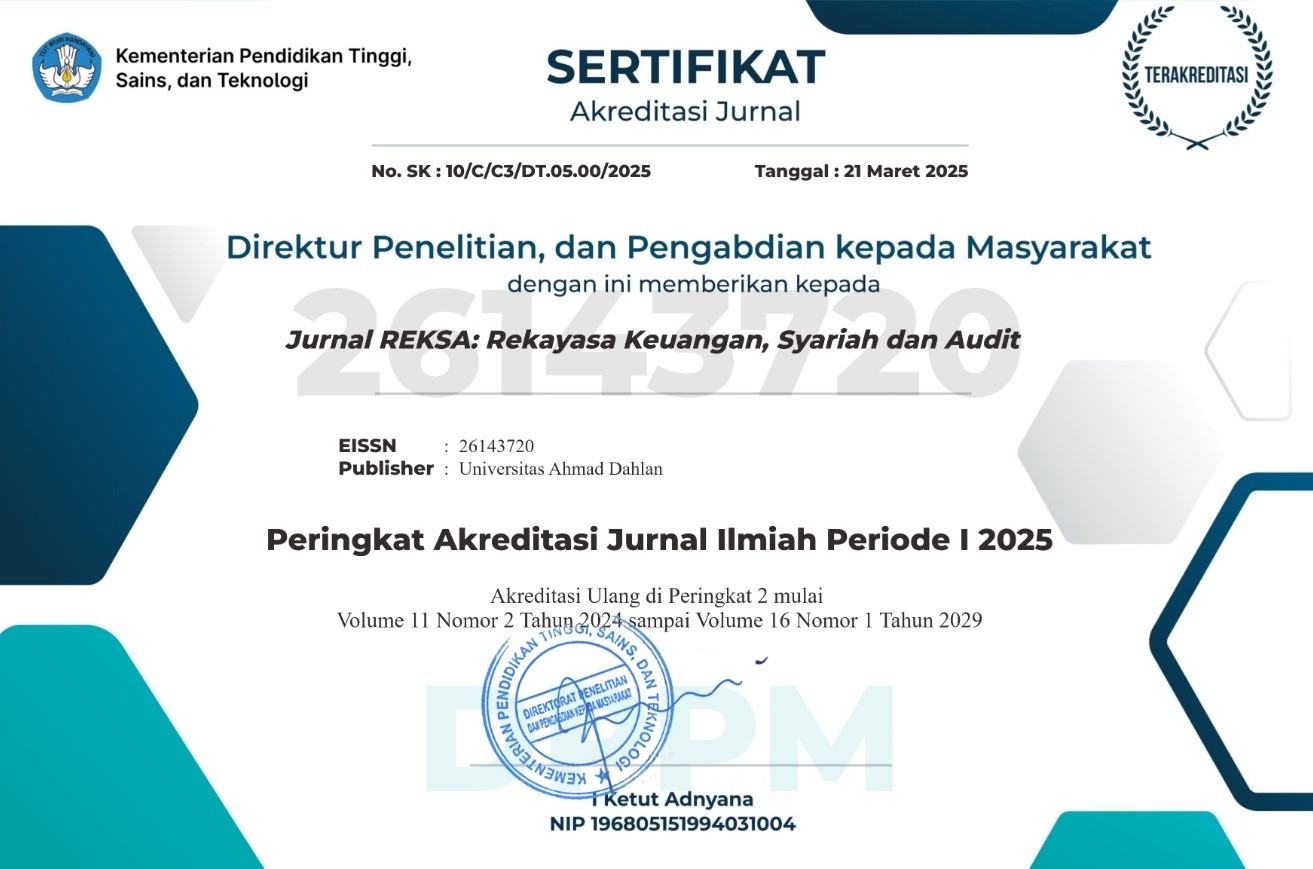JOURNAL ACCREDITATION

Author/s who wants to submit his/her article, please expected to consider the following rules:
General Requirements:
JOURNAL ACCREDITATION

Jurnal REKSA: Rekayasa Keuangan, Syariah, dan Audit
p-ISSN: 2089-6581 | e-ISSN: 2614-3720
_______________________________________
Editorial Address:
Accounting Department, Faculty of Economics and Business, Universitas Ahmad Dahlan
Jl. Kapas No. 9, Semaki, Umbulharjo, Daerah Istimewa Yogyakarta 55166
E-mail : reksa@act.uad.ac.id
________________________________________
![]()
This work is licensed under a Creative Commons Attribution 4.0 International License.